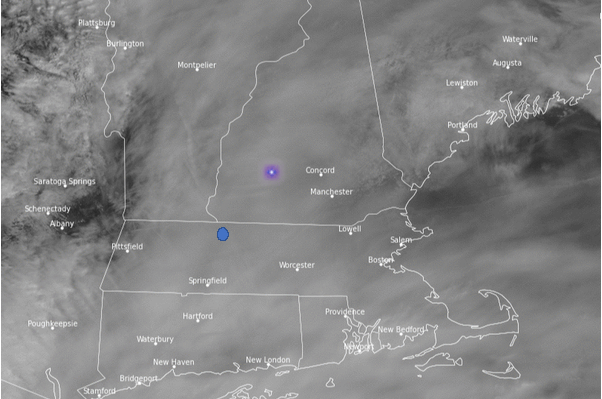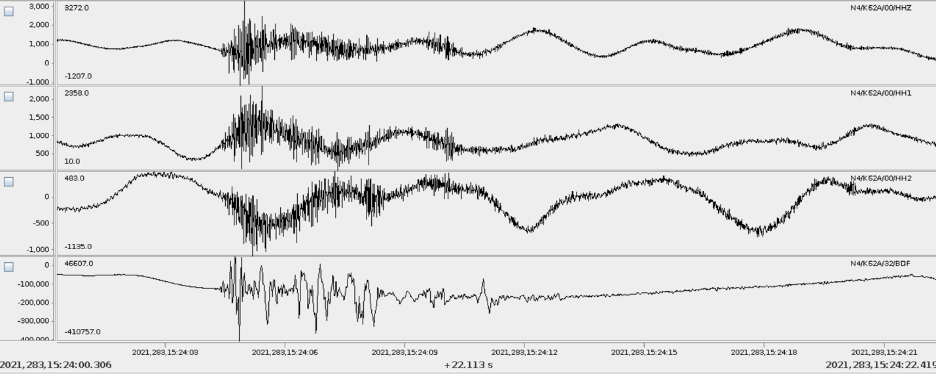New England Bolide Detected by Seismic Station
On Sunday, October 10, residents in New Hampshire heard a large boom. Various scientific groups, such as the US Geological Survey and the American Meteorological Society, began to investigate what could have caused this loud sound. Luckily, a seismic station originally installed in 2013 by the Incorporated Research Institutions for Seismology as part of the National Science Foundation’s EarthScope Transportable Array project and now operated by the US Geological Survey recorded the vibrations. Station N4.K62A, located near Royalston, Massachusetts, is also equipped with an infrasound sensor designed to record very-low-frequency acoustic signals produced by wind, meteors, avalanches, and volcanoes among other sources.
Given the coincident timing of the signals, and their relative amplitude, investigators concluded that the likely source of the vibration came from the atmosphere. If a distant on-the-ground blast or earthquake occurred, the ground motion signal would have arrived at the seismic station significantly earlier than the infrasound. Additionally, when an infrasound sensor is excited by ground motion – and thus simultaneously recorded at the station – it generally produces a very weak record. However, a high-amplitude infrasound signal has enough energy to create ground shaking, and when these infrasound and ground shaking signals occur at the same time at a recording station, the source of the vibration is likely to be in the atmosphere. In this case, a bolide, rather than a sonic boom, was the probably the cause. This was confirmed by the bolide flash in the GOES satellite image below.
 Bolide flash (purple) shown in GOES-16 image. Blue circle is location of seismic-infrasound station N4.K62A. Satellite image from NOAA GOES-16 via New York Times. |
 Plot of seismic traces (top 3) and infrasound trace (bottom) recorded at station N4.K62A on October 10, 2021. (Figure generated by US Geological Survey Albuquerque Seismological Laboratory). Plot of seismic traces (top 3) and infrasound trace (bottom) recorded at station N4.K62A on October 10, 2021. (Figure generated by US Geological Survey Albuquerque Seismological Laboratory). |
This type of event isn’t as rare as you might think. A similar event occurred near Homer, Alaska on September 30, 2021. Local residents reported seeing a “fireball” in the sky followed by what sounded like rolling thunder. This bolide was also captured by infrasound sensors installed nearby. Whether it’s earthquakes, volcanic eruptions or fireballs in the sky, geophysical instruments can help to decipher the signals and solve the mystery!


